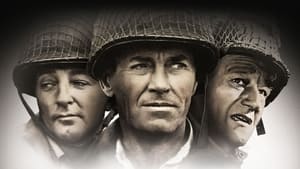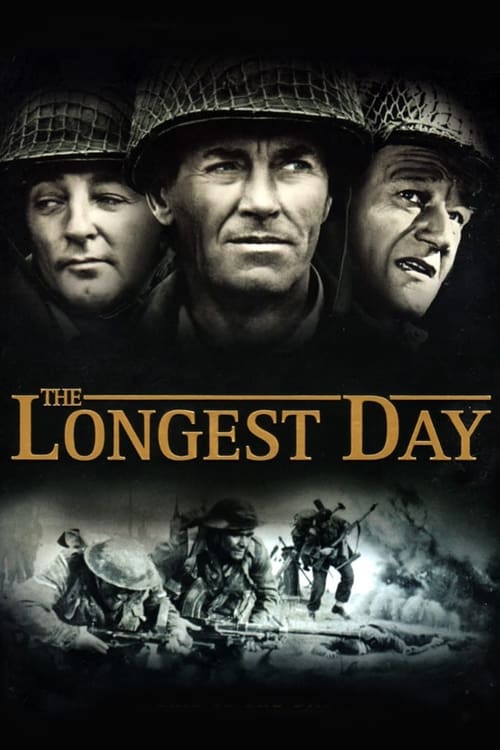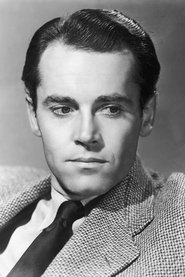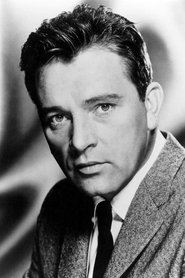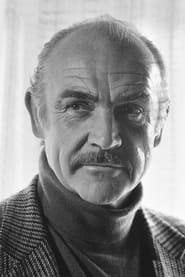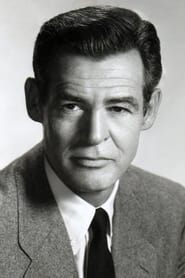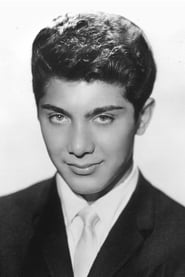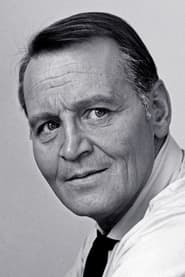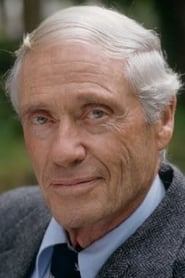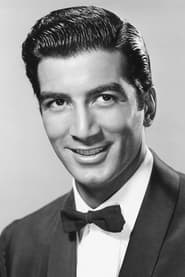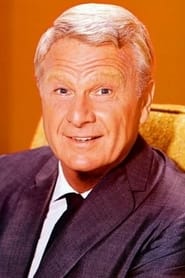Cast
View AllJohn Wayne
as Lt. Col. Benjamin Vandervoort
Robert Mitchum
as Brig. Gen. Norman Cota
Henry Fonda
as Brig. Gen. Theodore Roosevelt Jr.
Richard Burton
as Flying Officer David Campbell
Sean Connery
as Pvt. Flanagan
Leslie Phillips
as RAF Officer Mac
Robert Ryan
as Brig. Gen. James M. Gavin
Paul Anka
as U.S. Army Ranger
Wolfgang Büttner
as Maj. Gen. Dr. Hans Speidel
Mel Ferrer
as Maj. Gen. Robert Haines
Ray Danton
as Capt. Frank
Peter Lawford
as Lord Lovat
Eddie Albert
as Col. Thompson
Arletty
as Madame Barrault
Jean-Louis Barrault
as Father Louis Roulland
Crew
Director
- Ken Annakin
- Bernhard Wicki
- Andrew Marton
Writer
- David Pursall
- Romain Gary
- James Jones
- Jack Seddon
Producer
- Darryl F. Zanuck
Reviews
John Chard
For the Allies as well as the Germans, it will be the longest day.
The events of D-Day, told on a grand scale from both the Allied and German points of view.
The retelling of June 6, 1944, from the perspectives of the Germans, US, British, Canadians, and the Free French gets an all star production. One of the great war movie epics, it has all the requisite blunderbuss spectacle and heroism as the Allies invade Normandy. It's not hard to see why it was such a box office winner, sure it's a touch too long given that a lot of characters don't really have much to do, but performances are strong and the slices of humour off set some of the national stereotypes on show.
One has to marvel at the ambition of the production, Fox Studios boss Darryl F. Zanuck spent $10 million to get it onto the big screen, and it shows. Narrative is split into three parts, the preparation, the operations on land and sea in readiness for the Normandy assault, and then the landings in all their powerful glory. For sure we have seen more authentic war movies post The Longest Day, but it undeniably deserves its place as a template movie whose power to entertain in any era forever holds firm. 8/10
Jun 22, 2019
CinemaSerf
John Wayne may have featured just slightly more than anyone else in this drama, but it's very much an ensemble effort that delivers a film with a great deal of authenticity to it. It's all set around the day of the D-Day landings in 1944. The weather on England's south coast was, in the words of their meteorologist, "akin to mid-winter". Delay meant more frustrations for everyone so off they go using just about every form of transportation available - gliders, planes, tanks, landing craft - you name it, as a quarter of a million men (plus lots of sparkling "Tommies") headed to Normandy. Meantime, we also see a fairly plausible perspective from the Nazi side of the channel. They've been preparing for an invasion for a while, but are unsure where and when it will come and the apprehension is beginning to take it toll. What's also clear is that the High Command are, themselves, losing faith with the battle tactics of the Bohemian corporal and much less afraid to let it be known. It's now that the story picks up the pace as troops land by sea and air and face the entrenched enemy who are determined to stop the establishment of a beach-head. With bullets flying and explosions everywhere the cinematography, stunt arranging and pyrotechnics really do give us a sense of the dangers the men faced trying to secure a few miles of sand. There's a lovely, short, cameo from Bourvil as the mayor of a small town so delighted to see them that he turns up, suitably sashed and armed with a bottle of champagne to celebrate as the shells drop all around them! Gert Fröbe also finds his milk round become just a touch too perilous too, allowing just a little humour to creep into the story of precision logistics that didn't always go to plan. It's effectively and tightly edited and the momentum drives itself as we see but this one day - no conclusions, not even the end of the end of the beginning. It's lengthy, but each beach has it's own story to tell and the four creative brains behind this project keep it enthralling, for the most part, for a watchable three hours of horror and hope.
Jun 3, 2024
Thematic Analysis
As a dramatic work, The Longest Day examines complex human relationships and emotional struggles against the backdrop of a period setting that reflects societal issues of its time. The character development particularly stands out, offering viewers a chance to reflect on their own life journeys.
Director Ken Annakin brings their distinctive visual style to this film, continuing their exploration of themes seen in their previous works while adding new elements. Their approach to character development and emotional depth creates a viewing experience that rewards close attention.
Released in 1962, the film exists within a cultural context that now offers viewers historical perspective on the social issues of that era. Its critical acclaim reflects its artistic achievements and its place in cinema history.
Did You Know?
- The production of The Longest Day took approximately 29 months from pre-production to final cut.
- With a budget of $10.0 million, the film proved to be a financial success, earning back its investment and more.
- The final cut of the film runs for 178 minutes, though the director's initial assembly was reportedly 198 minutes long.
- Some visual effects sequences took up to 5 months to complete.
- The screenplay went through 14 major revisions before the final shooting script was approved.
- The cast underwent specialized training for 2 weeks before filming began.
Historical Context
- In 1962, when this film was released:
- The Vietnam War was becoming increasingly controversial.
- Counterculture movements were challenging traditional values.
- The film industry was dominated by major studios, with independent cinema still in its early development.
How This Film Stands Out
While The Longest Day shares thematic elements with other films in its genre, it distinguishes itself through its unique approach to storytelling, visual style, and character development.
Unlike Rabbit-Proof Fence, which focuses more on action than character development, The Longest Day subverts genre expectations by exploring its themes with greater nuance.
While films like A Walk in the Clouds and Christiane F. explore similar territory, The Longest Day stands apart through its distinctive directorial vision and pacing.
This film's unique contribution to cinema lies in its bold artistic choices and willingness to challenge viewer expectations, making it a valuable addition to its genre.
Details
- Release Date: September 25, 1962
- Runtime: 2h 58m
- Budget: $10,000,000
- Revenue: $50,100,000
